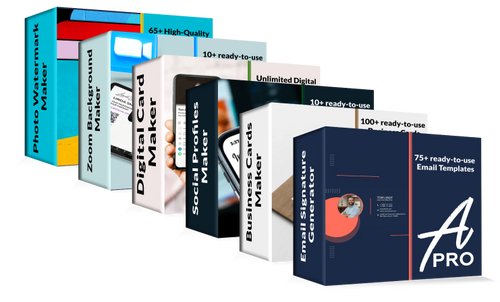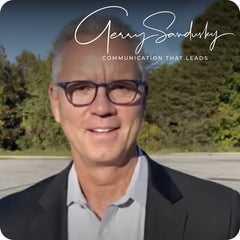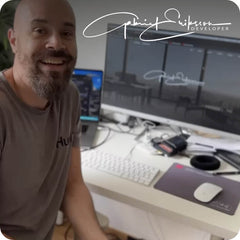For career workers looking to advance in today's digital environment, networking is crucial. Connecting with like-minded people, business leaders, and possible employers is made easier with LinkedIn's large user base and feature-rich platform. This post examines LinkedIn networking and provides professional advice on how to increase your chances of success. Regardless of experience level, this guide offers the know-how and resources you need to use LinkedIn efficiently, creating a robust network for fresh job openings, career guidance, and worthwhile contacts.
Why Use LinkedIn For Networking?
LinkedIn is the go-to platform for professional networking for several reasons. Firstly, it boasts over 950 million members worldwide, making it a vast pool of professionals from various industries and backgrounds. This extensive user base means that no matter what industry or job function you belong to, there are countless individuals on LinkedIn who can offer valuable insights, advice, and connections.
Secondly, LinkedIn provides a platform specifically designed for professionals to showcase their skills, experience, and accomplishments. It serves as a virtual resume, allowing you to create a comprehensive profile that highlights your professional background and expertise. This makes it easier for others to find and connect with you based on shared interests or areas of expertise.
Furthermore, joining groups with like interests, striking up relevant discussions, and establishing business connections are all made easier by LinkedIn's extensive networking tools. By using these tools, you may stay up to date on advancements in your profession, connect with other experts, and have discussions with like-minded individuals.
What Are The Benefits of LinkedIn Networking
- Access to a vast professional network:
LinkedIn allows you to connect with individuals from various industries, companies, and job roles. You'll be more likely to locate mentors, new job openings, and insightful information if you grow your network.
- Establishing your professional brand:
By actively engaging on LinkedIn, sharing industry-related content, and participating in discussions, you can position yourself as a thought leader and establish your professional brand. This can attract attention from potential employers or clients and enhance your professional reputation.
- Job opportunities and career advancement:
LinkedIn is an effective resource for professional advancement and job prospects. Employers and recruiters frequently use LinkedIn to find new candidates, and having a strong profile increases your visibility on the network. Making connections with professionals in your industry may also lead to recommendations and leads for new job opportunities.
- Access to industry insights and trends:
LinkedIn is a hub for industry-specific knowledge and discussions. Through following well-known authorities in your field and participating in organizations that interest you, you may stay current on the newest ideas, news, and trends. You might be able to make better judgments and have a competitive edge at work with this knowledge.
- Building relationships and connections:
Networking is all about building relationships, and LinkedIn provides a platform to connect with professionals who share similar interests and goals. Developing connections with people in your field offers doors to new opportunities, partnerships, and collaborations in addition to serving as a support network.
How To Use LinkedIn To Network
Optimize Your Profile
The first step to leveraging LinkedIn for networking is to create a strong and compelling profile. A professional profile photo, a succinct, well-written narrative, and an extensive list of your accomplishments, expertise, and talents should all be included. To improve your online presence and facilitate more people finding you, use industry-specific keywords.
Connect With Colleagues and Friends
Start by connecting with your current colleagues, former classmates, and friends who are already on LinkedIn. Using these relationships as a springboard will help you take advantage of new chances and grow your network. When requesting a connection, be sure to include a customized message that explains your interest in getting in touch. Your request is more likely to be granted when it has this personal touch.
Join Relevant Groups
LinkedIn groups are a great way to connect with like-minded professionals in your industry or area of interest. Participate actively in discussions and join groups that support your career objectives. This lets you share your knowledge, pick up tips from others, and form useful relationships. By leaving thoughtful comments on their posts or sending them pertinent content, you may interact with group members and grow your network.
Engage With Your Network
Developing and sustaining relationships is another aspect of networking in addition to interacting with people. Participate in your network by often sharing, liking, and commenting on content from other users. Congratulate them on their accomplishments and, if necessary, provide assistance or guidance. This strengthens the bond between you and your network contacts and shows that you are interested in their professional development.
Attend Events and Webinars
LinkedIn offers a variety of events and webinars that are designed to facilitate networking and professional development. Utilize these chances to grow your network and keep up of market developments. Participate in webinars, online workshops, and virtual networking events hosted by industry leaders. You can network with industry specialists at these events, exchange questions with them, and pick their brains for advice.
Request Recommendations
Recommendations are a powerful way to showcase your skills and expertise. Reach out to colleagues, mentors, or supervisors and request a recommendation on LinkedIn. These recommendations can highlight your strengths, work ethic, and professional accomplishments. Having positive recommendations on your profile can make you stand out to potential employers and clients.
Utilize LinkedIn Messaging
LinkedIn messaging allows you to directly connect and communicate with professionals in your network. Use this feature to reach out to individuals you want to connect with or to follow up with people you've met at networking events. When sending messages, be professional, courteous, and considerate of the other person's time. Personalize your message and explain why you want to connect or continue the conversation.
Share Your Knowledge
Create a name for yourself as an industry expert by publishing helpful articles on LinkedIn. Write articles, participate in pertinent forums, and inform people about advancements in the business. This will raise your profile and show how knowledgeable and committed you are to the subject. Recruiters, potential employers, and other people in the business sector who could be interested in getting in touch with you can view you more effectively.
Be Active and Consistent
Consistency is key on LinkedIn. Make sure to regularly update your profile, share content, engage with others, and stay active in your network. Set aside dedicated time each week to check and interact on LinkedIn. This shows that you are committed to your professional growth and networking efforts.
Explore Premium Features
To gain access to extra features and tools that can improve your networking experience, think about upgrading to LinkedIn Premium. Advanced search filters, InMail messages, and information on who has viewed your profile are examples of premium services. By using these tools, you may locate experts more easily, establish more meaningful connections with them, and raise your chances of finding employment.
How To Approach Hiring Managers Via Cold Outreach
- Personalize your message:
When reaching out to hiring managers, it's important to personalize your message. Take the time to research the company and the hiring manager's background. Mention specific details about their work or recent achievements to show that you've done your homework and are genuinely interested in their organization.
- Be concise and clear:
Keep your message concise and to the point. Hiring managers are often busy, so it's important to get your message across quickly. Clearly state your purpose for reaching out, whether it's expressing your interest in a specific job opening or seeking advice about the industry. Avoid lengthy paragraphs and use bullet points or subheadings to break up your message and make it easier to read.
- Highlight relevant skills and experiences:
In your message, highlight your relevant skills and experiences that make you a strong candidate. Focus on how your background aligns with the company's needs or the specific job role you're interested in. This will grab the hiring manager's attention and increase your chances of getting a response.
- Offer value:
Consider how you can provide value to the hiring manager or the company. Offer to share relevant industry insights, provide feedback on a recent project, or contribute to a discussion they are interested in. By offering value, you demonstrate your expertise and show that you're committed to mutual success, making you a more attractive candidate or potential collaborator.
- Show enthusiasm and passion:
Hiring managers are more likely to respond positively to individuals who show genuine enthusiasm and passion for the industry and the company. Let your excitement shine through in your message, and convey your eagerness to contribute and make a difference. This will leave a memorable impression and increase your chances of building a meaningful connection.
- Follow up appropriately:
After sending your initial outreach message, it's important to follow up appropriately. Give the hiring manager some time to respond, as they may be busy or have a high volume of messages to go through. If you don't hear back after a reasonable amount of time, it's acceptable to send a polite follow-up message to express your continued interest. However, avoid being pushy or demanding, as this can leave a negative impression.
How Can I Make Sure My LinkedIn Profile Stands Out From The Competition?
Focusing on improving essential components that represent your unique abilities, experiences, and personal brand is crucial if you want your LinkedIn profile to stand out from the crowd. Firstly, ensure that your profile photo is professional and reflects your industry.
A clear, high-quality headshot with a friendly and approachable expression can make a strong first impression. Create an engaging headline that emphasizes your expertise and value proposition. Use keywords related to your field and add a brief explanation of your professional background and notable accomplishments.
Next, use the "About" section to tell your story and set yourself apart. Use this area to emphasize your passion, values, and unique selling points. Be explicit about your accomplishments and offer concrete examples of how you added value in previous jobs. To raise your profile and promote your work, use multimedia components such as films, presentations, or portfolio samples.
Conclusion
In conclusion, LinkedIn is a great medium for networking and career success, and by applying the tactics mentioned in this article, you may maximize its potential. You can position yourself as a standout professional in your field by expanding your professional network, optimizing your profile, participating in relevant communities, connecting with industry leaders, leveraging job opportunities, nurturing relationships, practicing networking etiquette, and tracking your success. Remember, networking is not just about making connections but also about building meaningful relationships and adding value to others.
Final Thoughts
Take your signature to the next level with Artlogo. We specialize in creating custom handwritten signatures, logos, and business cards that are sure to leave a lasting impression. From freelancers to multinational corporations, our unique designs cater to professionals of all kinds. Discover the Artlogo advantage and proudly showcase your distinctive signature.
Sources

























Share to: